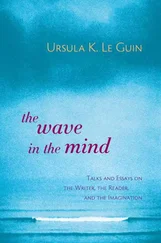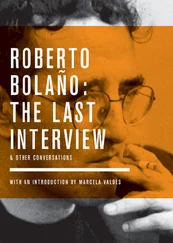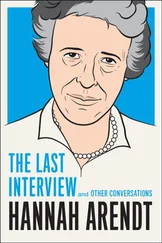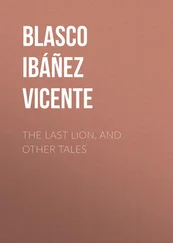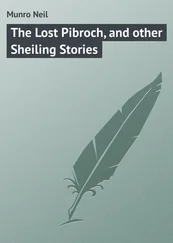Урсула Ле Гуин - Ursula K. Le Guin - The Last Interview and Other Conversations
Здесь есть возможность читать онлайн «Урсула Ле Гуин - Ursula K. Le Guin - The Last Interview and Other Conversations» весь текст электронной книги совершенно бесплатно (целиком полную версию без сокращений). В некоторых случаях можно слушать аудио, скачать через торрент в формате fb2 и присутствует краткое содержание. Город: London, Год выпуска: 2019, ISBN: 2019, Издательство: Melville House, Жанр: Биографии и Мемуары, Публицистика, sci_philology, на английском языке. Описание произведения, (предисловие) а так же отзывы посетителей доступны на портале библиотеки ЛибКат.
- Название:Ursula K. Le Guin: The Last Interview and Other Conversations
- Автор:
- Издательство:Melville House
- Жанр:
- Год:2019
- Город:London
- ISBN:978-1-61219-779-1
- Рейтинг книги:4 / 5. Голосов: 1
-
Избранное:Добавить в избранное
- Отзывы:
-
Ваша оценка:
- 80
- 1
- 2
- 3
- 4
- 5
Ursula K. Le Guin: The Last Interview and Other Conversations: краткое содержание, описание и аннотация
Предлагаем к чтению аннотацию, описание, краткое содержание или предисловие (зависит от того, что написал сам автор книги «Ursula K. Le Guin: The Last Interview and Other Conversations»). Если вы не нашли необходимую информацию о книге — напишите в комментариях, мы постараемся отыскать её.
Ursula K. Le Guin: The Last Interview and Other Conversations — читать онлайн бесплатно полную книгу (весь текст) целиком
Ниже представлен текст книги, разбитый по страницам. Система сохранения места последней прочитанной страницы, позволяет с удобством читать онлайн бесплатно книгу «Ursula K. Le Guin: The Last Interview and Other Conversations», без необходимости каждый раз заново искать на чём Вы остановились. Поставьте закладку, и сможете в любой момент перейти на страницу, на которой закончили чтение.
Интервал:
Закладка:
There is no rape on Gethen, no division of labor between “weak women” and “strong men,” and since at any time one may bear and raise a child, no males quite so free as males elsewhere. There are also no wars. There are skirmishes, raids, quarrels over territory, but no huge troop movements over continents. A pregnant person does not a general make.
The hero of the book, a visitor from Earth, is very uncomfortable with this arrangement, and it is his gradual, painful discovery of love between equals that forms the book’s heart. Le Guin has been criticized for using a male hero, but she has an explanation: “I knew a woman would just love it. There wouldn’t be any dramatic scenes; she would just settle right down. I needed this guy who hated it, who was uncomfortable and miserable in it. It’s true, a woman wouldn’t have done. She would have just run around saying, ‘Oooh, this is wonderful.’”
Le Guin did not know all this when she began the novel. For her, it started with a vision of two people pulling something across a lot of snow, and much of its content was “told to her” by the characters as she went along. Once she discovered something about them, she would go back over the novel, changing pieces here and there.
“The first time I ever went to a meeting where they discussed any of my books academically,” she chuckled, “a Canadian scholar was going to discuss The Left Hand of Darkness. He didn’t know that I was going to be there. When I walked in, he was appalled. He looked at me with a savage look on his face and said, ‘Just don’t tell me you didn’t know what you were doing.’ That’s a basic thing, actually, between scholars and artists. I think, ‘ Oh, is that what I was doing? Or Is that why I did that? and it’s very revealing. But the fact is, you cannot know that while you’re doing it. The dancer can’t think, Now I’m going to take a step to the left . That ain’t the way you dance.”
We ate a dinner of cold salmon from the Columbia Gorge, sitting at a picnic table on the broad porch that encircles the rear of the house, “leftovers” from a farewell dinner Le Guin had made for her daughter Caroline the night before. (Caroline was returning to Indiana, where she is starting her doctorate in Irish literature.) On the table was a small cup holding little silver spoons, very soft, very high-quality silver, commemorative pieces minted in different towns in Colorado during the great silver mining days. They were collected by Le Guin’s mother, Theodora; one was from Telluride, where she grew up.
Theodora met and married Alfred Kroeber in Berkeley, where he was a professor of anthropology at the university and she was his student (he remembered her bracelets clinking together when she spoke in class). Alfred is perhaps most well-known for his work and friendship with Ishi, a Stone Age man, the last of his tribe, who stumbled into the twentieth century in 1911. (Ishi died of tuberculosis in 1916, when he was probably fifty-six.) But it was Theodora Kroeber who, in her sixties, wrote the book Ishi In Two Worlds, which became nearly as popular as Coming of Age in Samoa and is considered a standard text in anthropology.
Much of Le Guin’s feeling for the Other, the anthropological details in her books and her fierce devotion to a balanced way of living on the earth, can be traced to her early upbringing. Although the name Ishi was never mentioned in the house (the subject seemed to cause Alfred Kroeber pain), Ursula heard Native American stories and myths from her father. And she remembers him sitting and talking to two of his closest friends, one a Papago and the other a Yurok, men who, unbeknownst to her then, were also her father’s anthropological informants, and who stayed with the family in the Napa Valley each summer and played croquet with Ursula and her three older brothers.
There were other guests: refugees with funny accents, other Native Americans, and a man with large ears who would “reappear” in her novel The Dispossessed : J. Robert Oppenheimer. [1] A professor of theoretical physics at Cal, Oppenheimer ran the Los Alamos nuclear lab during World War II and is considered the father of the atomic bomb.
Ishi was published in 1961, a year after Alfred Kroeber’s death. The book is so well written that Ursula, stricken with guilt, asked her mother if she had been unable to write earlier because of having to raise children. Her mother replied, “I did what I wanted when I wanted to. I have long thought I’d write when I wanted to.” She was, said Le Guin, “a very unusual person.”
Le Guin went to Berkeley High School, which she hated. “I wasn’t—you know, I never—my sweaters were never quite the right length or color. I never could do it right.” She then went to Radcliffe, and later Columbia, where she earned an M.A. in French, figuring she would need a skill to support herself while writing. She had already submitted poems and short stories by the time she went off to college—her father volunteered to be her agent. Some of the poems got published, but all of the short stories came back. These rejections went on until she was twenty-seven, short, civil notes; the characteristic adjective used by editors at Redbook and Harper’s and The Atlantic was “remote.” But Le Guin was not particularly discouraged: “I was dogged,” she says now. “I had an absolutely unfounded self-confidence, partly a temperamental thing and the way my parents brought me up. And I knew that I would get better.”
She met Charles Le Guin in 1953 on the Queen Mary when both were sailing to France on Fulbright scholarships. After the crossing, Le Guin was “fairly sure.” The two married in France and returned at the end of the year to Macon, Georgia, where Charles had grown up.
There, in the bosom of a huge Southern family (“There are hundreds and hundreds of them,” says Le Guin), Charles finished his doctorate and Ursula taught freshman French. She continued writing: she wrote a novel while she was working, once, as a secretary in the physics department of Emory University; after the children were born, she wrote at night, when she’d done the dishes.
One of her works was published in a small university quarterly, but it was not until 1962, when she was thirty-two, that she got her first check. Le Guin had given up reading science fiction years before, because all it seemed to be about was “hardware and soldiers.” But a friend encouraged her to read Harlan Ellison, Philip K. Dick, and Theodore Sturgeon, and Le Guin discovered that the genre was changing. The first story she submitted to the science-fiction market was bought by a woman editor—Cele Goldsmith Lalli, then with Fantastic and Amazing magazines, both fantasy/sci-fi monthlies. For that story, “April in Paris,” Le Guin got $30, which she immediately spent on a pair of brown wool pants she had seen advertised in the New Yorker.
She published four novels before The Left Hand of Darkness. Then, in 1970, she made of her hometown, Portland, a novel. The Lathe of Heaven is about a small, ordinary draftsman named George, who discovers that he can change the future (and the past, retroactively) by his dreams. It is a very delicate novel, populated by ordinary people and turtlelike aliens who find themselves in the midst of environmental catastrophes. Le Guin says she was paying homage to the late Philip K. Dick, author of Do Androids Dream of Electric Sheep? from which the movie Blade Runner was made, badly in Le Guin’s opinion. Dick’s books are filled with small businessmen going broke. One gets by, advises an alien in The Lathe of Heaven, with a little help from one’s friends.
Читать дальшеИнтервал:
Закладка:
Похожие книги на «Ursula K. Le Guin: The Last Interview and Other Conversations»
Представляем Вашему вниманию похожие книги на «Ursula K. Le Guin: The Last Interview and Other Conversations» списком для выбора. Мы отобрали схожую по названию и смыслу литературу в надежде предоставить читателям больше вариантов отыскать новые, интересные, ещё непрочитанные произведения.
Обсуждение, отзывы о книге «Ursula K. Le Guin: The Last Interview and Other Conversations» и просто собственные мнения читателей. Оставьте ваши комментарии, напишите, что Вы думаете о произведении, его смысле или главных героях. Укажите что конкретно понравилось, а что нет, и почему Вы так считаете.


